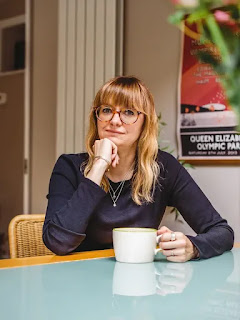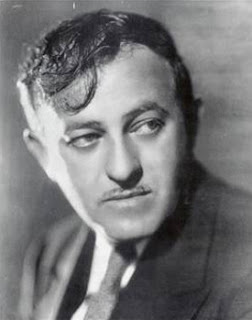Constance Lombardo is the author of the new children's picture book Itty Bitty Betty Blob. Her other books include Everybody Says Meow. She lives in Asheville, North Carolina.
Q: What inspired you to write Itty Bitty Betty Blob, and how did you create your character Betty?
A: This book started with an idea to write a “school story” focusing on Picture Day. My childhood memories about it: the agony of getting my untamed hair vigorously brushed by Mom, choosing the perfect outfit (think yellow macrame vest,) and putting on my best smile (braces!), inspired me.
Add in my experience as a mom myself (“Is that what you’re wearing? Want me to brush your hair?”) and I had my starting point.
But, as I tell kids on school visits, every good story needs a twist. Though I’m not a fan of scary monsters, I do love CUTE monsters (Grover is my favorite). And we writers know “what ifs” lead to brainstorming, so what if it were Picture Day at Monster School? (my original title!)
What if instead of smiling, monsters are expected to scowl and gnash their teeth for the camera? What if they make their hair even messier and sport their most ghoulish outfits? And one more twist: what if one tiny, adorable monster does not want to do any of those things.
So my subversive Itty Bitty Betty blob was born. Blobs are mutable, full of possibilities, fun! And Betty is definitely not the blob you need to beware of (1950s movie reference!).
She is a shining, pink light in the dark world of monsters. She dances where other monsters stomp. She sings when other monsters “GRRR!” And none of her art turns out ugly. Betty is the best kind of hero: one whose revolutionary act is simply being true to her authentic self.
Q: What do you think Micah Player’s illustrations add to the book?
A: I’ve been a huge fan of Micah’s art for years, so I was thrilled when we got paired by our agent, Lori Nowicki of Painted Words, for this project.
Illustrations in picture books are always half the story, but Micah brought even more than that. His vision of all Betty could do as a blob (melt in the shower, squeeze under a log), how the book evolves from blacks and greys to full color (like the Wizard of Oz!), and everything about Betty’s irresistibly adorable pink self added many layers of visual dynamism and meaning.
He turned a good and funny story into an incredibly beautiful and heartfelt picture book. His contribution to this book is hard to quantify, so let’s just say a million. (Bonus: we’re friends, and I love working with him!)
Q: The BookPage review of the book says, “Itty Bitty Betty Blob’s nicely balanced combination of humor, emotion and inspiration makes it an absolute treat of a read—a warm and wonderful reminder to celebrate our differences and dare to share joy with others.” What do you think of that description?
A: I honestly love it! Because, yes, Itty Bitty Betty Blob is about sharing joy and celebrating differences. Though in my view, we are all “different” in our own way.
I believe understanding our true self, embracing it, and letting the world see that is such a powerful act of bravery. Betty has gotten so much love since she first blobbed her way into the world, and I’m so grateful for all of it.
Q: Did you know how the story would end before you started writing it, or did you make many changes along the way?
A: I always knew Betty’s smile would disrupt the status quo in the world of monsters. And YES we made so many changes along the way. One line from my original manuscript that I was sorry to lose was about someone’s “snapping-turtle-neck sweater.”
Mom in particular went through various incarnations, as my editor Jill Davis and I debated her role. Should she be supportive or more challenging? In the end, Mom is one of my favorite parts of this story – she’s such a loving presence and Betty’s biggest fan (exactly how I feel about my son!).
Actually, the only exact text that survived from the original are the words the little monsters say instead of “cheese!” while the photographer snaps their pictures. (Bees! Fleas! Scabby knees!)
Q: What are you working on now?
A: Betty’s getting a sequel: Itty Bitty Betty Blob Makes a Splash!
Betty must choose an afterschool activity and lands on the diving team. To her dismay, the Devil Divers are all about cannonballs and bellyflops, while she dreams of divine dives. Can Betty be a team player while staying true to herself?
Q: Anything else we should know?
A: Writing (and sometimes illustrating) kids books is my dream come true. It took me 10 years of rejection letters to finally get my wonderful agent. She connected me with my excellent editor, and we make a great team.
To anyone out there dreaming of becoming a published author, keep writing, keep submitting, keep hope alive!
--Interview with Deborah Kalb


















